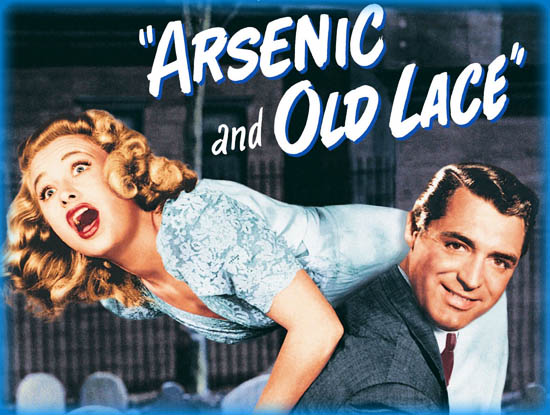
A comedy or a Halloween story? Why can’t it be both? Friendly old ladies with bodies in the cellar, a Theodore Roosevelt impersonator, and a newlywed romantic film critic that somehow finds himself in the middle of a serial murder case, all together in Frank Capra’s 1944 blockbusting film, “Arsenic and Old Lace.”
With its chaotic plotline and relatable characters, the film is the perfect combination of funny and unsettling. Now reaching its 80th anniversary, the film remains an iconic time capsule of post-Depression screwball humor.
The film is based on an even more popular play by the same name, which ran for three and a half years from 1941 to 1944. The film’s original release date was supposed to be in 1942, but the directors decided they did not want to clash with the play’s viewings.
The cast consists of some of the preeminent actors from Hollywood’s Golden Age. Cary Grant, known for his lighthearted approach to comedy and roles in similar films, is a perfect fit for dramatic critic Mortimer Brewster, who writes novels against love and marriage, while having a secret wedding with his neighbor fiancée. Priscilla Lane, also known for her comedic abilities, plays Elaine Brewster, daughter of the next-door priest, and Mortimer’s new wife. Josephine Hull and Jean Adair portray Mortimer’s kind yet eccentric serial-killer aunts, who poison lonely, elderly gentlemen in order to help them find happiness.
The film’s artful retention of the play’s gut-sinking humor is admirable. The actors portray their roles with a fluency rarely seen in some more modern films, their emotions and actions effectively accenting their characters and allowing for the audience to both enjoy the humor and feel unsettled by it.
The plot is loosely based on the real life serial killer Amy Archer-Gilligan, a nursing home proprietor who poisoned at least five of her patients for their life insurance money between 1907 and 1917. One of her victims was her husband, Michael Gilligan.
In a post-Depression and war-ravaged America, the public was especially drawn to movies that satirized major issues such as poverty, violence and discrimination, with which the everyday person was well-acquainted, which made “Arsenic and Old Lace” instantly popular with its interpretation of murder and satirized love.
Though the setting and characters may now seem archaic, the skillful blending of comedy and horror creates a timeless film that can be appreciated by anyone, not only by classic film fans.




















































